513: Security Turmoil and Impact on UK Property Prices
07-26-2014
PropertyInvesting.net team
As more wars break out across the world there will be a further flight to safe heavens for property investment.
Recent History As Context: First let’s roll back a few years to the year 2000. There was a gigantic internet-tech bubble that burst March 2000 and sent stock markets reeling. Much of the smart money was the funnelled into property. The US reacted by lowering interest rates. Then the US economy appeared to be coming out of recession – then 9/11 happened and the Fed further dropped interest rates. This stimulated a housing bubble in the US and so the called sub-prime mortgage crisis that 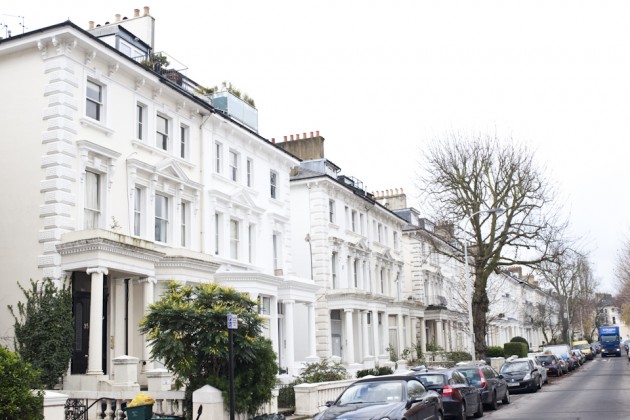 broke out mid 2008 when interest rates rose off the back of higher inflation and growth. This growth spurt was partly caused by China’s ten year long 10% annual GDP growth to that point that put severe strains on resources – particularly oil supplies. This culminated in an oil price shock in 2008 when a blow-off occurred up to $148/bbl caused largely by massive Chinese imports just before the Olympics and lack of supply from OPEC plus production disruption s around the world. After 2008 deficits as a percentage of GDP skyrocketed around the world as many countries sank into recession. The Fed reacted by printing trillions of dollars and the European Central Bank and Bank of England joined in flooding economies with digital currency “not worth the paper is was not printed on”. Banks were not allowed to fail and hence bad debts, zombie banks and misallocation of capital started in earnest. The peripheral European countries had to instigate severe austerity measures after years of cheap money from the ECB and caused shocks and high unemployment, particularly youth unemployment.
broke out mid 2008 when interest rates rose off the back of higher inflation and growth. This growth spurt was partly caused by China’s ten year long 10% annual GDP growth to that point that put severe strains on resources – particularly oil supplies. This culminated in an oil price shock in 2008 when a blow-off occurred up to $148/bbl caused largely by massive Chinese imports just before the Olympics and lack of supply from OPEC plus production disruption s around the world. After 2008 deficits as a percentage of GDP skyrocketed around the world as many countries sank into recession. The Fed reacted by printing trillions of dollars and the European Central Bank and Bank of England joined in flooding economies with digital currency “not worth the paper is was not printed on”. Banks were not allowed to fail and hence bad debts, zombie banks and misallocation of capital started in earnest. The peripheral European countries had to instigate severe austerity measures after years of cheap money from the ECB and caused shocks and high unemployment, particularly youth unemployment.
Printed Currency Leading to Bubbles: The trillions of dollars were exported all around the world and this propped up oil prices – they recovered from $60/bbl to $105/bbl. The unintended or intended consequence of this policy was of course to create inflation in goods and services – that directly lead to higher food prices by 2010. Many of the North African and some Middle Eastern countries had declining oil production and high oil export costs so were hit by a double whammy of higher food prices and high oil prices in these desert cities/nations. Of course riots broke out as social spending dropped – manifesting itself in the so called “Arab Spring”. As autocracies crumbled – seemingly encouraged by the US government in the vein hope of democratisation – then civils wars started to break out and social disorder and turbulence. Firstly in Tunisia, then Egypt, Yemen, Syria, Barhian and Libya. Insurgency in Iraq kept going ten years after Saddam was overthrown – and accelerated after the US pulled their forces out leaving an ill-trained Iraqi security forces to cope. The foreign entanglement in Libya overthrew Gaddafi and this was replaced by disparate rebel groups with continued fighting. More recently problems have broken out in Ukraine, Gaza/Israel then a massive insurgency by ISIS that has taken over the who of NW Iraq and Eastern Syria – declaring a new Sunni state.
Printing - Commodities and House Prices: The reason for mentioning all of this is to highlight how the printing of dollars has driven up oil and food prices thence caused instability as desperate desert population have felt economically disadvantaged. Meanwhile western nations foreign policy had clearly failed. Foreign entanglements have been spotty, all seem to have led to a worsening of the situation. Encouragement of democratisation has clear failed – reference Egypt. More wars are breaking out. More people are being killed. The world is a more dangerous place.
Super Rich Elite Feeding Off No Cost Printed Currency: Meanwhile the zero cost currency has allowed the rich elite to make high returns and prosper – and the poor have generally got poorer because of high fuel and food prices. Fast forward to the property scene. Just as we predicted, very high inflation is the result. When the peripheral countries start to implode, the rich elite in these countries start to export their dollars to safe havens and put their money into the safest thing possible to protect against inflation. Of course this is property in places like London. It is absolutely no surprise top end London property prices continue to rise as the $3 Trillion of exported printed currency starts to find a home. They also put money into places like London because the currency is fairly stable – and rising against their nations currency which is dropping. So they make a double whammy return of property price rises in Sterling terms then Sterling to national currency rise. For instance, property in West London has risen 15% in the last year – but the Russian Ruble has gone down 20% - hence the real return for a Russian buying secure London property rights is 35%. Not bad considering the turmoil and recession in the mother country.
Foreign Investment Piles In: The trend of foreign money piling into London started with the Chinese – then  the Greeks, Spanish, Portuguese, Syrian, Libyan, Yemen, Tunisian, Russian, Ukrainian – we even have 300,000 French many arriving after Hollande put up taxes a few years ago. This situation is likely to continue as long as the Tories stay in power, though may reverse in May 2015 if Ed Miliband is elected – since Labour would tax property, the rich, discourage wealthy foreigners from settling in London and Sterling would decline. The country would likely go back into recession – as France did immediately after Hollande and the socialists were elected. Of course foreign investment into London is only one reason why prices – particularly in the upper end of the market – are rising.
the Greeks, Spanish, Portuguese, Syrian, Libyan, Yemen, Tunisian, Russian, Ukrainian – we even have 300,000 French many arriving after Hollande put up taxes a few years ago. This situation is likely to continue as long as the Tories stay in power, though may reverse in May 2015 if Ed Miliband is elected – since Labour would tax property, the rich, discourage wealthy foreigners from settling in London and Sterling would decline. The country would likely go back into recession – as France did immediately after Hollande and the socialists were elected. Of course foreign investment into London is only one reason why prices – particularly in the upper end of the market – are rising.
Socio-Economic Trends: There are a few important social-economic trends that are very evident – that are driving high prices. More foreign wealth young women are settling in London – the daughters of the global elite – who get degrees at London University or get jobs in London and are likely to stay. These rich women buy flats in West London – they may do this themselves or get help from their family
More wealthy young people – all highly motivated, rising career ladders and wanting to own their own London property. They may have graduated in UK university of back in their home country. They want the best properties just like British people do. They are competing for a dwindling number of homes.
Status and Desires: of the multitude of foreign people coming to live in the UK is no different to those aspirations of the British – they want their kids to go to the best schools, live on the best houses in the best areas. Its human behaviour and is a worldwide phenomenon. The young upwardly mobile foreign and local people tend to love living very close to the centre – places like Kensington, Clapham, Waterloo, Hoxton, Whitechapel, Barons Court, Earls Court or closer in to Chelsea-Kensington-Mayfair-Marylebone-Soho. Most foreigners are not interested in living in the British countryside. This trend partly explains why central London prices have shot up whilst country home prices are following a national trend.
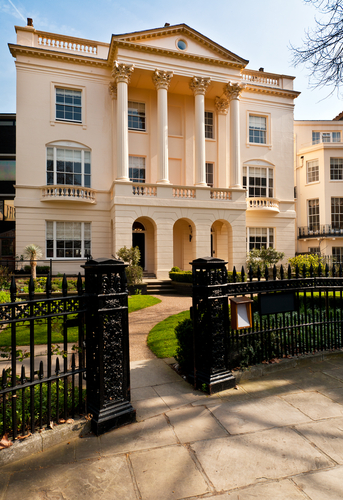 Affordability: There has been much talk of people note being able to afford to buy a property – this is true to a certain extent but we would not under-estimate the availability of floods of foreign currency/cash for these younger people to buy properties in the future. They are here to stay and they want the best properties. It’s a global market and they love property just like the Brits do. They like the status of owning just like the Brits. No, they are not 60-80 years old – they are 22-40 years old and eager to buy a place in London as soon as they can. Furthermore as these young people earn more as they get more experience and wages rise with inflation – they will borrow more and drive property prices higher. You may recall a one bedroom flat in Fulham cost £60,000 in 1990 – today it costs £400,000 and in another 23 years it’s likely to cost £1,200,000 – because government continue to print currency in a race to the bottom.
Affordability: There has been much talk of people note being able to afford to buy a property – this is true to a certain extent but we would not under-estimate the availability of floods of foreign currency/cash for these younger people to buy properties in the future. They are here to stay and they want the best properties. It’s a global market and they love property just like the Brits do. They like the status of owning just like the Brits. No, they are not 60-80 years old – they are 22-40 years old and eager to buy a place in London as soon as they can. Furthermore as these young people earn more as they get more experience and wages rise with inflation – they will borrow more and drive property prices higher. You may recall a one bedroom flat in Fulham cost £60,000 in 1990 – today it costs £400,000 and in another 23 years it’s likely to cost £1,200,000 – because government continue to print currency in a race to the bottom.
Supply Side: Of course underlying the high demand for property is the low supply side – as the other part of the equation. The numbers of properties being build has plateaued somewhat – probably as a reaction to the threat of a Labour party win in the May 2015 elections. It’s not far away and if Labour win, they will put up property taxes particularly in London, mandate more affordable homes and regulate harder – which is not good for the free market, capitalism and builders. Labour would increase the size of the government and public sector again and along with it the deficits. So many will be slowing down to see what happens.
Lack of New Homes: In London, in the next ten year the population is set to increase by at least 1,000,000 – the size of the city of Birmingham. However the number of properties being build is a meagre 25,000 per a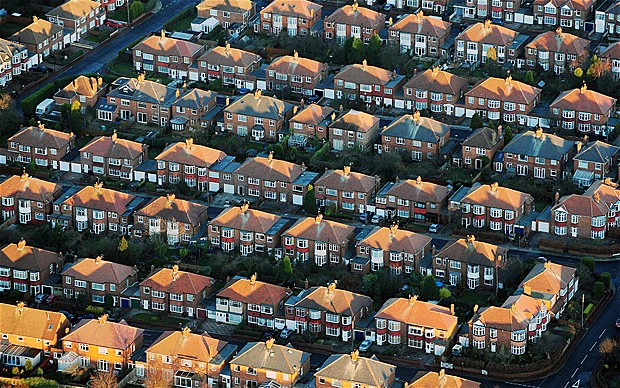 nnum – and most are luxury flats with starting prices >£500,000. This is not going to help reduce prices because at least 60,000 new properties are required each year – an impossible number to achieve we think. It was interesting to notice last month when Labour won the Hammersmith and Fulham Council election, the first thing they did was stop the Earls Court Exhibition Centre redevelopment project that will supply about 3000 new homes. One reason is they want more affordable homes. Of course this has delayed the 3000 homes coming onto the market – again unintended consequences are a further restriction to supply. If Labour win this is likely to worsen as more regulation will lead to lower supply of homes. This happened through to 2010 when Labour eventually lost the election – at which time there was an all-time low building level for 110 years – half of what it is today.
nnum – and most are luxury flats with starting prices >£500,000. This is not going to help reduce prices because at least 60,000 new properties are required each year – an impossible number to achieve we think. It was interesting to notice last month when Labour won the Hammersmith and Fulham Council election, the first thing they did was stop the Earls Court Exhibition Centre redevelopment project that will supply about 3000 new homes. One reason is they want more affordable homes. Of course this has delayed the 3000 homes coming onto the market – again unintended consequences are a further restriction to supply. If Labour win this is likely to worsen as more regulation will lead to lower supply of homes. This happened through to 2010 when Labour eventually lost the election – at which time there was an all-time low building level for 110 years – half of what it is today.
We Want Houses Not Flats: 80% of British people want to live in a house – preferably detached. However 80% of new homes are apartments. The bulk of these are so called luxury apartments. They still find a 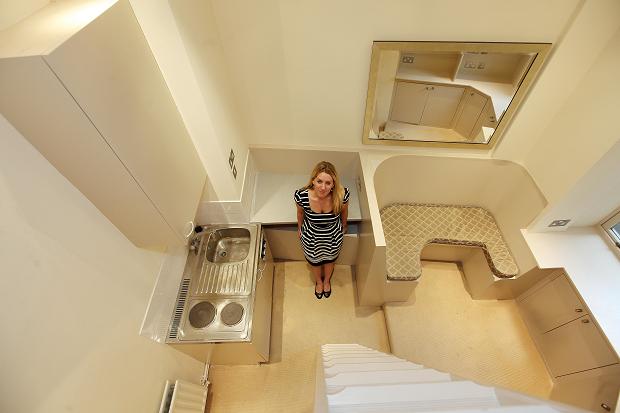 market because of the lack of supply of houses in central areas. Any detached house in prosperous cities and towns with rising employment will see the price rise – simply because there are not enough to go around. Rich babyboomers often don’t want to sell their houses because of stamp duty – that would need t be paid on a smaller flat, so they end up living in 4-5 bedroom houses but only use on bedroom because their kids have flown. This is of course the unintended consequences of a ridiculous tax that encourages people not to move. This fuels the housing shortage even further and indirectly drives rents up. Its also worth pointing out that the quality of housing in the UK is quite appalling compared to France and Holland. For example, even though Holland has double the density of population than the UK and are about the same wealth in GDP terms, the sizes of their houses are 65% bigger on average. The same is true in Germany. In the UK we put up with shoe-box size rooms – poky, small windows and tiny gardens – at huge prices. Meanwhile only 3% of land is built on and half of that is gardens in suburban areas (you can check this out using GoogleEarth). Councils and public sector authorities are sitting on vast land banks – mostly derelict – and red tape seems to stop any of this land coming to market. Meanwhile there is a moratorium on building on so called greenbelt land – much of it fallow or unused.
market because of the lack of supply of houses in central areas. Any detached house in prosperous cities and towns with rising employment will see the price rise – simply because there are not enough to go around. Rich babyboomers often don’t want to sell their houses because of stamp duty – that would need t be paid on a smaller flat, so they end up living in 4-5 bedroom houses but only use on bedroom because their kids have flown. This is of course the unintended consequences of a ridiculous tax that encourages people not to move. This fuels the housing shortage even further and indirectly drives rents up. Its also worth pointing out that the quality of housing in the UK is quite appalling compared to France and Holland. For example, even though Holland has double the density of population than the UK and are about the same wealth in GDP terms, the sizes of their houses are 65% bigger on average. The same is true in Germany. In the UK we put up with shoe-box size rooms – poky, small windows and tiny gardens – at huge prices. Meanwhile only 3% of land is built on and half of that is gardens in suburban areas (you can check this out using GoogleEarth). Councils and public sector authorities are sitting on vast land banks – mostly derelict – and red tape seems to stop any of this land coming to market. Meanwhile there is a moratorium on building on so called greenbelt land – much of it fallow or unused.
 Supply Size Crunch: No matter which way you look, it’s difficult to see the supply side improving significantly – in London one can assume a maximum of say 30,000 homes a year being built, with a requirement for 60,000 homes and a population rise of 110,000 a year for the next 5-10 years. Hence as long as employment is strong and no recession happens, then prices will need to rise further because of the continued demand-supply imbalance. Everyone talks of grand new schemes but in reality there are almost no affordable homes or housing now being built in London – regardless of whether there is a Labour or Tory Council. They both have similar track records on supply affordable homes. We used to see stories of homes for “Key Workers” – even these stories have dried up in part because there are no new homes being built for “Key Workers”. It just doesn’t happen anymore.
Supply Size Crunch: No matter which way you look, it’s difficult to see the supply side improving significantly – in London one can assume a maximum of say 30,000 homes a year being built, with a requirement for 60,000 homes and a population rise of 110,000 a year for the next 5-10 years. Hence as long as employment is strong and no recession happens, then prices will need to rise further because of the continued demand-supply imbalance. Everyone talks of grand new schemes but in reality there are almost no affordable homes or housing now being built in London – regardless of whether there is a Labour or Tory Council. They both have similar track records on supply affordable homes. We used to see stories of homes for “Key Workers” – even these stories have dried up in part because there are no new homes being built for “Key Workers”. It just doesn’t happen anymore.
North More Space: In the north of England – the situation is very different. There are many vacant building plots, building costs are lower but prices are lower and returns for builders less attractive. These does not encourage much building – but then the population is expanding less quickly – at about half the rate and  hence demand is less vibrant. The northern city economies are improving after the 5 year depression from 2008 to 2013 – but it’s not nearly vigorous enough to create any sort of housing boom. The public sector jobs losses have reduced now and the economy is more re-balances, but manufacturing is still suffering from years of underinvestment, poor competitive backdrop (high wage and energy prices) and high Sterling. So we don’t expect northern economies to boom as this time. The property prices skyrocketing in Salford is more to do with all those (over) highly paid BBC workers moving up from London than anything else. This also happened when the Met Office moved from London to Exeter – and can be predicted by canny investors in advance of such employee movements. The good news is the UK car industry is booming with record numbers of cars being built – though the number of jobs created is far less than decades ago. It still helps in places like Derby, Coventry, Liverpool and Sunderland. The highlights are Rolls Royce, Land Rover, Jaguar and Bentley – of course all cars for the super-rich elite – many exported to China. Car sales have doubled since the Feb printed the $3 Trillion – again no surprise. At least its creating jobs making luxury cars in the UK.
hence demand is less vibrant. The northern city economies are improving after the 5 year depression from 2008 to 2013 – but it’s not nearly vigorous enough to create any sort of housing boom. The public sector jobs losses have reduced now and the economy is more re-balances, but manufacturing is still suffering from years of underinvestment, poor competitive backdrop (high wage and energy prices) and high Sterling. So we don’t expect northern economies to boom as this time. The property prices skyrocketing in Salford is more to do with all those (over) highly paid BBC workers moving up from London than anything else. This also happened when the Met Office moved from London to Exeter – and can be predicted by canny investors in advance of such employee movements. The good news is the UK car industry is booming with record numbers of cars being built – though the number of jobs created is far less than decades ago. It still helps in places like Derby, Coventry, Liverpool and Sunderland. The highlights are Rolls Royce, Land Rover, Jaguar and Bentley – of course all cars for the super-rich elite – many exported to China. Car sales have doubled since the Feb printed the $3 Trillion – again no surprise. At least its creating jobs making luxury cars in the UK.
Country Property: Coastal property and quaint country properties in the UK have seen prices rise by about 200% in the last 25 years. They are still likely to rise at a slightly faster pace than north urban properties 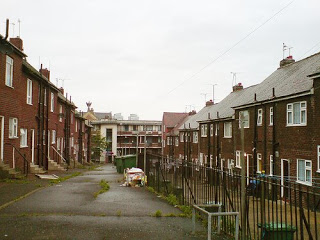 fore instance, but we believe the massive increase in wealthy foreign workers from all parts of the globe settling in London will mean the two tier market will continue. Most foreigners don’t feel at home in the typical country areas in England and will be looking for places in Central London or suburban London instead. Many elderly people prefer to be near large towns and cities because healthcare and emergency services are better. There will still be a rippling out of property prices rises – but it won’t be as evident as it was in 1986 and 2003 – the last two times were was a “ripple effect”. Instead it will be more of a “ripple effect” out from central London to places like Streatham, Finchley, Ealing and Lewisham as most of the British people are priced out of prime London properties.
fore instance, but we believe the massive increase in wealthy foreign workers from all parts of the globe settling in London will mean the two tier market will continue. Most foreigners don’t feel at home in the typical country areas in England and will be looking for places in Central London or suburban London instead. Many elderly people prefer to be near large towns and cities because healthcare and emergency services are better. There will still be a rippling out of property prices rises – but it won’t be as evident as it was in 1986 and 2003 – the last two times were was a “ripple effect”. Instead it will be more of a “ripple effect” out from central London to places like Streatham, Finchley, Ealing and Lewisham as most of the British people are priced out of prime London properties.
International Prices As Context: There are lots of stories of the London property prices being in a bubble. However, when you look at international property prices – for instance those in Hong Kong – prices have risen 200% in ten years – so the 80% in central London in the same period starts to look fairly mild. Again, it’s the currency that has been devalued because of money printing – and property is the only safe place for currency if inflation hits.
Fiat Currencies – Gold and Property: Because all currencies are fiat currencies – and will eventually devalue and fail – because they are not pegged to anything physical like gold, silver, property or oil – then  expect property prices to rise in currency terms but not necessarily in gold or oil terms. What we mean is – in 20 years time – instead of £350,000 middle range flat in London, it’s likely to cost £1,000,000 but in gold terms – as a ratio of a flat to gold in ounces – it probably won’t have moved much. It’s more a case that the currency has been devalued than the real property prices have risen. Of course all the people living in poorer areas have seen their net worth destroyed by negative saving rates and low or declining property prices whilst food and fuel inflation has been running at 5-8% and wage inflation at 1-2%. The only real winners have been people living in London where the property prices have risen higher than general inflation since the depression started in 2008. London has continued to grow whilst almost all rural and northern urban areas have only just exited the depression. It’s been London taxes that have help to shore up these weak economies after the massive deficits, debts and high unemployment that Labour left behind in 2010. It’s taken four years to start a full recovery and it’s finally kicking in as the economy has re-balanced somewhat from the bleak period 2008-2012 – a real depression in 90% of areas outside SE England.
expect property prices to rise in currency terms but not necessarily in gold or oil terms. What we mean is – in 20 years time – instead of £350,000 middle range flat in London, it’s likely to cost £1,000,000 but in gold terms – as a ratio of a flat to gold in ounces – it probably won’t have moved much. It’s more a case that the currency has been devalued than the real property prices have risen. Of course all the people living in poorer areas have seen their net worth destroyed by negative saving rates and low or declining property prices whilst food and fuel inflation has been running at 5-8% and wage inflation at 1-2%. The only real winners have been people living in London where the property prices have risen higher than general inflation since the depression started in 2008. London has continued to grow whilst almost all rural and northern urban areas have only just exited the depression. It’s been London taxes that have help to shore up these weak economies after the massive deficits, debts and high unemployment that Labour left behind in 2010. It’s taken four years to start a full recovery and it’s finally kicking in as the economy has re-balanced somewhat from the bleak period 2008-2012 – a real depression in 90% of areas outside SE England.
Wars: Moving forward we expect more wars to break out regrettably – there are simple too many trouble spots of different ethnic cultures clashing. And too many government supplying arms that cause more damage. There are radical group and rebels in too many countries. The old fault lines between the Russian and European groups are re-appearing after 68 years of relative peace – meanwhile rebel group in the Middle Eastern and North African deserts continue to fight. Some of the old autocracies like Libya and Tunisia have broken down. In Egypt we had an autocracy replaced by a radical Islamist democracy then a coup back to a secular military autocracy. Russia and China are emboldened and the USA has become more insular – the big guns are working their influence and this turbulence regrettably will continue. With it more dollars will arrive in the UK to buy London properties driving prices higher. They say that economic  cycles through history have followed this pattern: 1) boom; 2) depression; 3) currency wars; 4) trade wars; 5) world wars. This cycle happened between 1900 and 1918, then between 1920 and 1945. Recently we had the boom of 1981 through to 2007 then depression 2008-2011, then we have currency wars 2010 to 2013 – we are starting the trade wars and sanctions period now with more wars breaking out. The last phase regrettably is world wars – so much of North Africa-Middle East through to Ukraine is now in turmoil – it’s difficult to see a nice outcome at this time – as the US, China and Russia all spar off against each other. This is without mentioning the South China Sea. Time to get into safe havens – preferably western democracies with oil/gas/metals with well run governments – like Norway, Australia, Canada and possibly the UK and USA – well away from the war zones.
cycles through history have followed this pattern: 1) boom; 2) depression; 3) currency wars; 4) trade wars; 5) world wars. This cycle happened between 1900 and 1918, then between 1920 and 1945. Recently we had the boom of 1981 through to 2007 then depression 2008-2011, then we have currency wars 2010 to 2013 – we are starting the trade wars and sanctions period now with more wars breaking out. The last phase regrettably is world wars – so much of North Africa-Middle East through to Ukraine is now in turmoil – it’s difficult to see a nice outcome at this time – as the US, China and Russia all spar off against each other. This is without mentioning the South China Sea. Time to get into safe havens – preferably western democracies with oil/gas/metals with well run governments – like Norway, Australia, Canada and possibly the UK and USA – well away from the war zones.
We hope this Newsletter has given you some interesting insights into the property market in London and the UK. If you have any comments of queries please contact us on enquiries@propertyinvesting.net

